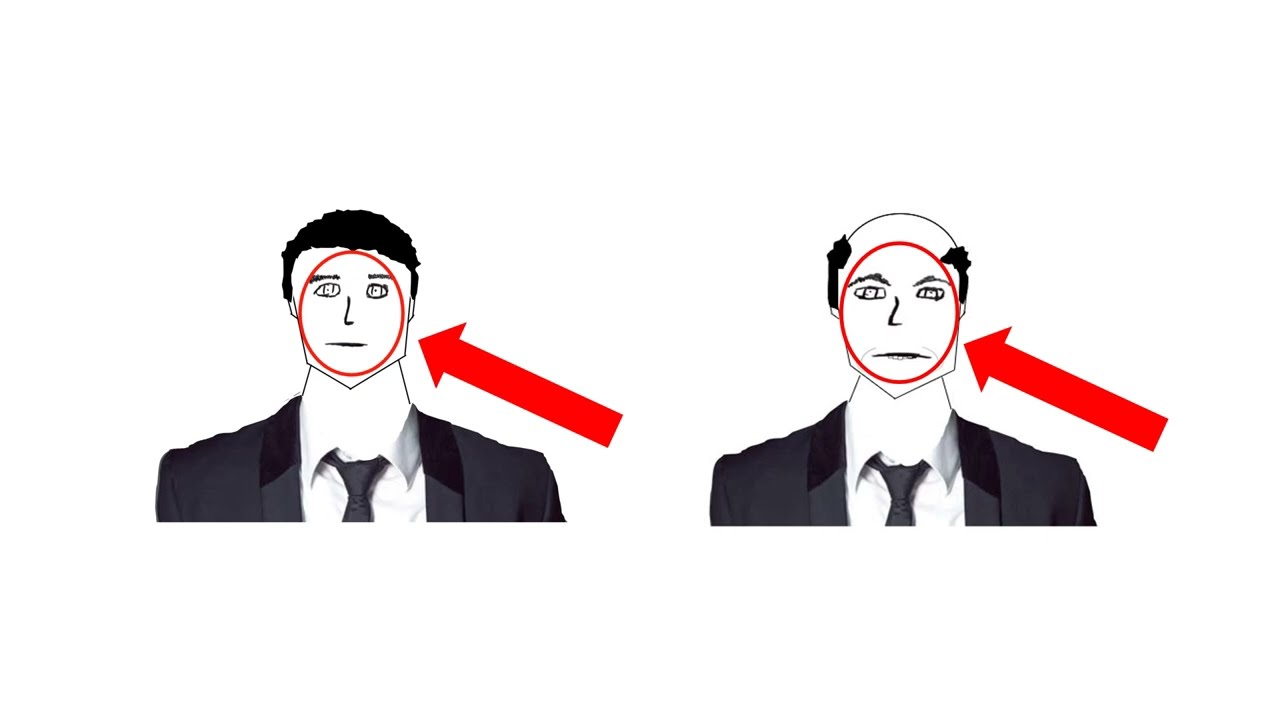Thesis: Hair loss is the result of conditioning induced by interpersonal interactions. The state of mind (emotion) inferred externally from a person’s face and head shape does not match that person’s actual state of mind (emotion). For example, the person may be neutral-minded, but is perceived by outside people as, for example, threatening, aggressive, conniving, gloating, or disgusted, based on the shape of the face. The lack of correspondence between actual and perceived state of mind (emotion) is perceived (subconsciously) by the affected person. As a result, in the physical areas that are causal for the misinterpretation of the state of mind (emotion) (e.g. mouth area, eye area), states of tension occur, which ultimately lead to hair loss.
Video:
Question: Has anything along these lines already been discussed/excluded?
Head and face shape is hereditary. The head and face shape of a son is similar to the head and face shape of his father and mother (but more like the father’s). Because of the similar head and face shape, the son is subject to the same “misinterpretations” of people around him as his father and is thus subject to the same subconscious social psychological “conditioning process” that leads to similar states of tension and, as a result, similar pronounced hair loss.
The following physical characteristics, among others, play a role in the interpretation of a person’s state of mind (emotion) and could therefore be decisive:
- the shape of the over-eye bulge
- the arrangement, shape and color of the eyebrows
- the arrangement, size, shape and colors of the eyes
- the shape of the upper jaw
- the size and shape of the lips
- the size and shape of the mouth
- the size, shape and visibility of the teeth
- the shape of the lower jaw
As an example, a man with “piercing” eyes or a threatening-looking eye area could be more likely to be affected by hair loss in the forehead and temple area. A man with a pronounced upper and lower jaw, a slightly open and slanted mouth when relaxed, and partially visible teeth - which in combination can have a threatening impression on surrounding people - might be more affected by hair loss in the tonsure area.

